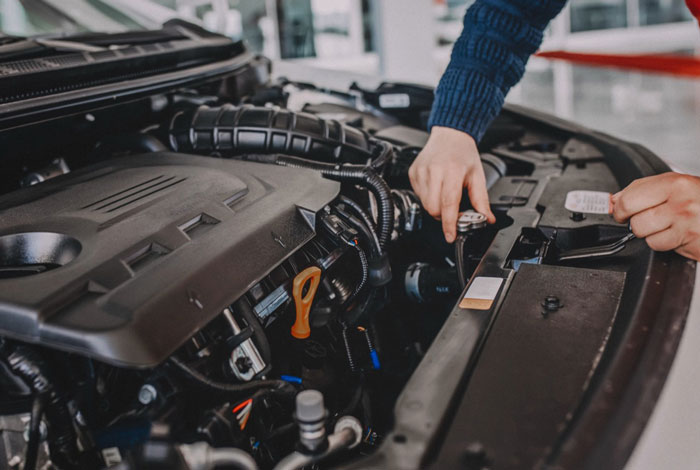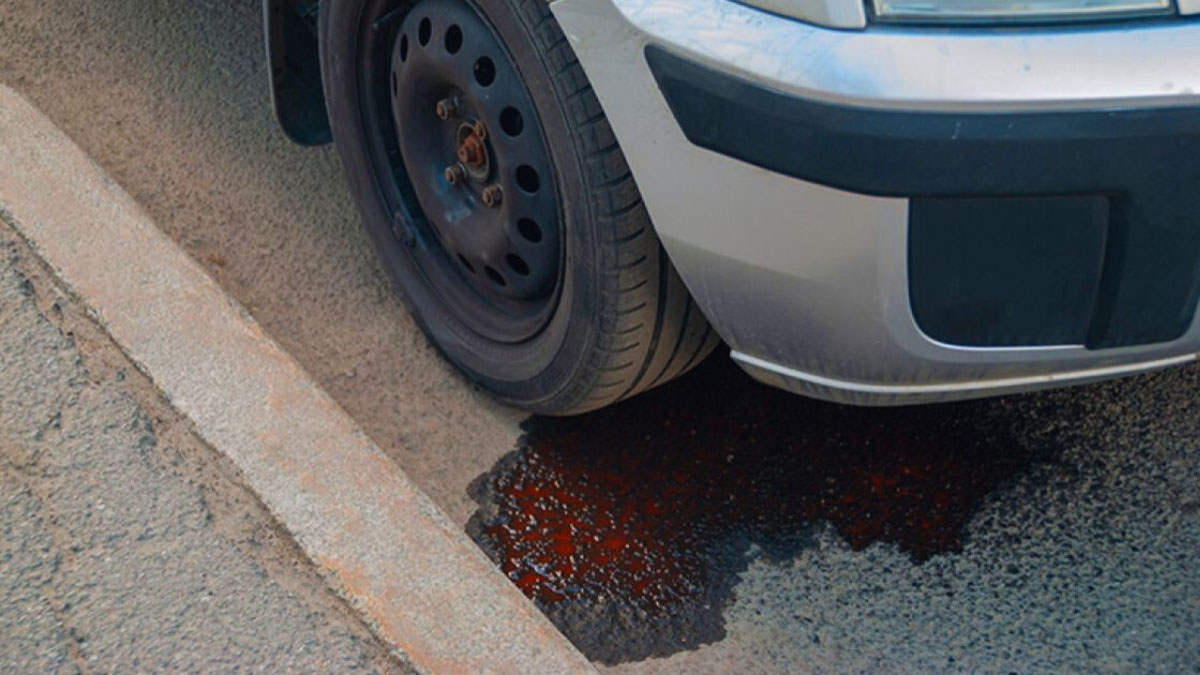So, picture this: you’re cruising down the road, feeling like you own the world, when suddenly you notice a mysterious puddle forming beneath your car. Is it a sign that your four-wheeled companion has decided it’s time for a liquid diet? That’s right, folks, we’re talking about coolant leaks from the bottom of your car!
Before you start panicking and imagining your engine staging a protest, let’s take a closer look at this slippery situation. From cracked hoses to a grumpy radiator, there are a few culprits that could be behind this unexpected leak. But fear not, dear reader, for I’m here to navigate you through this watery maze and help you decipher whether your car is simply thirsty or in need of some serious TLC.
Identifying Signs of Coolant Leaks
So, you’ve found yourself faced with a mysterious puddle forming beneath your beloved four-wheeled companion. Time to put on your detective hat and sleuth out the signs of coolant leaks like a pro!
Pool of Coolant Under the Car
Picture this: you stroll up to your car, and there it is, a shimmering pool of coolant right beneath it. Don’t fret; this could be your car’s way of saying, “Hey, buddy, something’s not right here!” So, if you spot a colorful puddle that looks like it belongs in a rainbow, it might just be coolant leaking.
Coolant Warning Light Activation
Ah, the mysterious glow of warning lights on your dashboard – a true spectacle to behold! If your car decides to throw a tantrum and illuminates that coolant warning light, well, it’s not just for show. That little symbol is your ticket to the coolant leak detective game – time to roll up your sleeves!
Common Sources of Coolant Leaks
Let’s explore some of the usual suspects when it comes to coolant leaks in your car!

Damaged Hoses and Connections
So, picture this: your car’s coolant system is like a fancy network of pipes circulating liquid gold (well, coolant). Now, if these pipes have seen better days and are all cracked up, guess what? They’re probably letting that precious coolant escape like it’s a jailbreak! It’s like trying to hold water in a strainer – not very effective.
Faulty Radiator and Radiator Cap
Imagine your car’s radiator as the cool kid at a party, keeping things chill under the hood. But if that radiator has a little hitch in its giddy-up or its cap is feeling a tad loose, it might start acting all leaky and spilling the beans… err, coolant. It’s like having a leaky water balloon; nobody wants that mess.
Blown Head Gasket
Think of the head gasket as the bouncer between the engine’s combustion chamber and the coolant system. When this VIP bouncer decides to call it quits and blow its cover, things can get messy. The coolant and oil could start cozying up in places they shouldn’t be, causing a leaky love story no one asked for.
Steps to Diagnose and Locate Coolant Leaks
So, you’re facing the classic coolant leak from the bottom of your car conundrum! Don’t fret, dear reader, for I’ve got your back. Let’s jump into some quirky but effective steps to sniff out these pesky leaks before they turn your car into a mobile sauna.
Initial Inspection
Alright, first things first: give your vehicle a good once-over. Check for any suspicious puddles under your car. Remember, coolant often has a sweet smell and may be green or orange, so follow your nose and eyes Sherlock-style to locate the leaky culprit.
Pressure Testing the Cooling System
It’s time to play detective with a pressure test. This nifty little trick involves pressurizing the cooling system to unveil any hidden leaks. Pop the hood, attach the pressure pump, pump it up, and watch closely for that telltale drip. It’s like a thrilling game of “Find the Leak” in your own garage!
Solutions for Fixing Coolant Leaks
So, you’ve discovered mysterious puddles under your car, and the dashboard is throwing a coolant warning party. Time to roll up our sleeves and tackle those pesky coolant leaks before they turn your ride into a mini swimming pool.
Replacing Damaged Components
Ah, the joys of playing car mechanic! Grab your toolkit and get ready to swap out those worn-out parts causing all the trouble. Here’s a sneak peek into the world of replacing damaged components:
- Hoses: Let’s start with the flexible heroes of your coolant system – the hoses. Check for cracks, leaks, or squeezability like a stress ball. If they resemble a leaky fountain pen, it’s time to bid adieu and welcome the shiny new replacements.
- Radiator: Picture this – your radiator is like the heart of the cooling system, keeping things chill. If it’s looking like a reject from a steam punk festival or resembles a sieve, it’s shouting, “Replace me!” Listen to your radiator – it knows what’s best.
- Caps: Those sneaky radiator caps may seem innocent, but if they’re loose or damaged, they’re the leak culprits. Tighten them up like your life depends on it, or swap them for fresh ones that know the drill – keeping that coolant where it belongs.
- Head Gaskets: These gaskets are the cool cats sealing the deal between the engine block and the cylinder head. If they decide to blow a gasket themselves, it’s game over. Keep an eye out for external leaks or any signs of coolant mixing where it shouldn’t. Time for a replacement fiesta!
Feeling like a coolant leak detective yet? It’s all about channeling your inner Sherlock and giving your car the TLC it deserves.
Ensuring Tight Seals and Connections
Alright, time to tighten those loose ends – quite literally! Seals and connections are the unsung heroes of the coolant system, keeping everything in check. Here’s the lowdown on ensuring those tight seals and connections:
- Thermostat Housing: This housing keeps the thermostat cozy, but if the seal is off or leaking, it’s like leaving the front door wide open in winter – not a great idea. Check for leaks or drips, and if things look fishy, it’s seal replacement time!
- Water Pump: The water pump is the pumping powerhouse of the coolant system, circulating that liquid gold. If the pump shaft seal or gaskets are acting up, it’s like having a leaky faucet – not fun. Keep an eye out for drips or puddles beneath the pump, and if things are getting damp, it’s replacement o’clock!
- Heater Core: Ah, the heater core – keeping you warm and toasty in winter. But if the connections or core itself decide to leak, it’s more like a wet surprise party in your car. Don’t let leaks dampen your ride – inspect for moisture or sweet-smelling coolant, and if things seem fishy, tighten those connections or opt for a replacement.
Conclusion
Well, there you have it, folks! Being a coolant leak detective is no easy task, but with a keen eye for mysterious puddles and a nose for that sweet coolant smell, you can crack the case of the leaking car. Remember, whether it’s a sneaky hose, a rebellious radiator, a cap that’s on vacation, or a head gasket throwing a tantrum, quick action is key to keeping your ride in top shape. So, tighten those seals, check those connections, and bid farewell to those pesky leaks. Stay cool, keep your coolant system in check, and happy driving!
Frequently Asked Questions
How can I identify coolant leaks in my car?
Look out for mysterious puddles under your vehicle and dashboard warnings indicating low coolant levels.
What are common sources of coolant leaks in a car?
Damaged hoses, faulty radiators, loose radiator caps, and blown head gaskets are common culprits.
How can I fix coolant leaks in my car?
Replace damaged components such as hoses, radiators, caps, and head gaskets promptly to prevent further damage.
How do I detect the source of a coolant leak in my car?
Inspect your radiator and hoses for visible damage, and look for wet or damp areas around the engine.
What should I do if my car is leaking fluid from the bottom?
Check the color of the fluid – clear or light-colored fluid is likely harmless, while dark or oily fluid may indicate a more serious issue.

